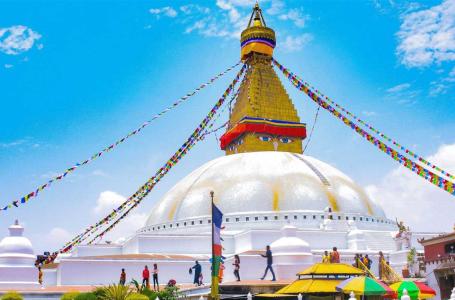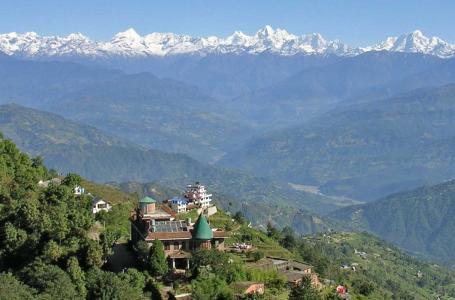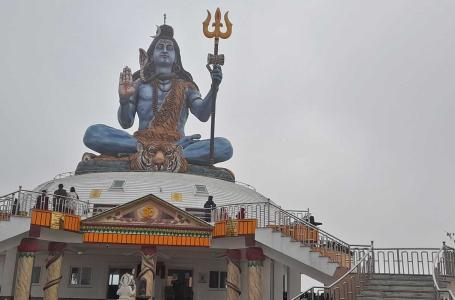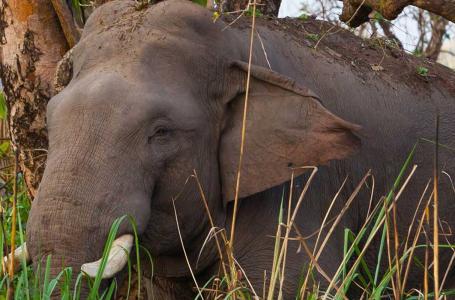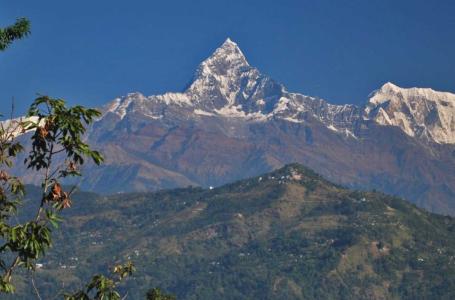Walking through the Sherpa-dominated hamlets of the Khumbu area is the finest opportunity to get up and personal with the tales of Mount Everest. The routes are off-the-beaten-path and span multiple unexpected cliffs to lead you to some of the most stunning overlooks on the planet, staring out at an incredible panorama of mountains, lakes, and glaciers. Throughout the tour, you will be delighted by the stunning scenery and vibrant valleys that challenge the extremes of the mountains.
This trek is best done by trekkers who are familiar or experienced with the altitude and the mountains and not by newbies. There is no acclimatization pause to recharge your body for the next day's heights. You will be constantly testing the paths and the height, putting your life in danger due to the detrimental effects of altitude. So, if you believe you are now comfortable with mountains and altitudes, !TAKE THIS OPPORTUNITY! to go on a 14-day trek to Everest Base Camp trek with Helicopter return.
If you are looking for something affordable, check out our Everest Base Camp Trek package.
You've arrived in Nepal at long last. Our crew will pick you up from the international airport by vehicle or jeep and guide you to a five-star hotel that has been pre-booked in advance of your arrival. Welcome to Nepal.
Thamel will be our first stop of the day. The crowded lanes of Thamel are lined up with an endless chain of artisan and souvenir dealers, making it Nepal's most active bazaar. Thamel offers all the added prettiness to captivate a guest, from the traditional Thangkas to the soothing singing bowl.
We will now travel to Kathmandu Durbar Square, also known as Basantapur Durbar Kshetra, our final stop for the day. Basantapur provides visitors with historic architecture, intricate carvings of heavenly figures, and lifestyle patterns that demonstrate the design's intricacy. There are also many similar structures in the pagoda style. While much of today's physical construction dates from the 16th century, the original building was erected in the 3rd century.h
We will now return to the hotel and recover after a busy day of touring.
Patan and Bhaktapur are two historically significant cities in Nepal's Kathmandu Valley, both known for their rich cultural legacy, old architecture, and active customs. We will begin our day with a private vehicle or taxi ride to Patan Durbar Square. This UNESCO World Heritage Site is well-known for its exquisitely carved temples, courtyards, and medieval architecture. We will begin at a beautiful temple devoted to Lord Krishna, popularly known as the Krishna Temple. This temple is a Newari architectural wonder, with elaborate carvings and great craftsmanship. Then we'll visit the Bhimsen Temple and the Golden Temple. The Bhimsen Temple is devoted to Bhimsen, a Hindu deity venerated as the god of trade and commerce. The temple, built in the pagoda style, is notable for its distinctive architecture and beautiful wood carvings. Whereas The Golden Temple is a Buddhist monastery famous for its magnificent golden façade. Its name comes from the temple's elaborate workmanship, which includes gold-plated metal coatings. Inside, the temple has a lovely courtyard and a collection of Buddhist statues and relics.
From there, we will go to Bhaktapur Durbar Square, a UNESCO World Heritage Site and cultural treasure located in Bhaktapur, a historic city in Nepal's Kathmandu Valley. The square is a bustling center distinguished by its rich history, spectacular architecture, and religious significance. The area is surrounded by spectacular Newari architecture, including historic mansions, temples, and courtyards. Among the notable monuments are the 55-Window Palace, Nyatapola Temple, Vatsala Temple, Bhairavnath Temple, and the beautifully carved Peacock Window. You can also participate in other hobbies such as pottery or painting.
We will then return to your respective hotel, where you will rest for the day.
Early in the morning, we will have our breakfast in the hotel and then, leave to the airport for the flight to Lukla. It is a scenic flight over the gorgeous valleys with views of the mountains and ridges accompanying all the way up to the Lukla. While at times, you may be frightened by the sharp-looking ridges below. But, it is okay to have that thought for an adventurous experience.
On arriving at the airport at Lukla, with the shortest runway, we will start-off our trekking towards Phakding. We will walk along the silent trail, fenced by the farm-fields on both side, and pass by several Mani walls. There are suspension bridges, connecting the two isolated hills, where we will walk through in a hope of encountering a fabulous viewpoint. Consequently, the snowy peak of Kusum Kanguru could be witnessed at some point. Down the village of Ghat, we will finally make an appearance at the Phakding.
This day is one of the challenging days of the whole Everest Base Camp Trek.
For the first few couple of hours, we will contour around the west side of the Dudhkoshi River and waver up and down along the frequent switchbacks on the trail. On the way, we will encounter a pleasant waterfall at the nice village of Toctoc. We will continue to walk, but just before arriving at the Bengkar, we will see another waterfall at Bengkar. You may as well try the apple pies of this region.
A brief ascent to Monjo will introduce us into the naturally exotic forest of Sagarmatha National Park. There are chances of witnessing the Blue Sheep, but only the luckiest few people have seen the red Panda here.
We will continue through the Jorsalle towards the Namche.
During the final ascent of the forest, there is a viewpoint overlooking the gorgeous views of the Everest. It can only be witnessed on a clear day. A beautiful Kani Gate and a chorten welcome us to the village of Namche
From Namche, the trail leads off along the right-most trail through the memorial stupa of Tenzing Norgay Sherpa, the first person to summit the mountain Everest with the Sir Edmund Hillary. We will walk through the woods and extrude out into a viewpoint, offering sensational views of the Ama Dablam, Lhotse Shar, Taboche, Kangtega, and Thamserku.
We will continue our journey through the Phunke Tenga. Just before crossing a suspension bridge, there is a line of 7 water-driven prayer wheels, spinning with the pace of the river. One spin of the prayer wheel is similar to chanting the Buddhist Mantra of ‘Om Mane Padme Hum’. It is believed to be the good luck for the passerby.
Within a couple of minutes, we will introduce ourselves into the meadows of Saso Kharka and then, proceed to Tengboche. Don’t miss out the visit to the Tengboche Monastery, the largest monastery of the Khumbu region.
Early in the morning, we will attend the prayer ceremonies at the Tengboche Monastery and then, explore the interiors and exteriors of the monastery. The fine paintings of the Buddha and Guru Rinpoche, hung around the wall, are the masterpiece of traditional artistry of Khumbu region.
We will proceed to the Deboche where the views of the Ama Dablam, and other peaks gradually rise to spark a moment of happiness in your soul. Soon, the trail meets a bridge, crossing which keeps us to the west of the Imja Khola. The large black overhanging rocks, on the way, used to provide shelter for the porters and ponies in the past when there was no facility of lodges to stay. The trail continues through the Somare, parallel to the Imja Khola, until we arrive at the Dingboche, our next station.
Dingboche is a traditional village, typically with the stone houses, where the farm-fields and settlement area are surrounded by 4 feet (rough estimate) stone walls to protect them from the heavy winds. The people of this village greatly rely on yaks for living, and yak husbandry is their primary profession.
The walk to Lobuche is mostly along the moraine. This route from Dingboche to Lobuche can be divided into two parts, in terms of their distinct trails.
In the first part of the journey, we will ascend over the moraine and walk along the ridge, sometimes through the pastures, until we make up to the nice village of Dughla. While on the ridge, we may witness few mountains on the north, but the haze will cover all the views, most of the time. When we arrive at the Dughla, our second part of the journey begins.
We will have already left the ridge, so we will proceed along the steep bluffs until making an appearance at the Lobuche. The second part is a bit of a tough climb. Once we are on the Lobuche, the reminiscing views of the Nuptse peak cannot be overlooked. It can be seen from the window of the lodge as well on a clear day.
Certainly, this is the big day as we are about to enter into some of the exquisite viewpoints on earth. But, it is good to control your emotions and go slow on the trail. Otherwise, the altitude may ruin all the good aspects of coming so far to the base camp of the Everest.
Before the darkness is swept by the sunlight, we will proceed to the Gorakshep from Lobuche. It is because in the first few hours of the morning, the pacing icy winds from the glaciers will resist our pace, making our trek more challenging to do.
Once we reach the Gorakshep, we will proceed to the awesome view point of Kalapatthar. This place is so extraordinary that you will have to slap your own cheek to become aware of the reality. The 3600 panorama of the mountains, particularly the Mount Everest, appears sensational. The glaciers and surrounding peaks of the Ama Dablam, Thamserku, and Kantega could be distinctly observed. But, the real animation is brought by the countless tiny anonymous buttresses, which have been guarding the soul of the mountains for ages.
Later, we will descend to the Gorakshep for the overnight stay.
[Note: The sunset view from the Kalapatthar is more exquisite than the sunrise view. Therefore, instead of going to the Everest Base Camp (EBC) (as in customary itinerary), we will go to Kalapatthar on this day.
The day's trip begins with a hike to the iconic Kala Patthar viewpoint. We will begin our walk early in the morning, following our breakfast. The route progressively ascends, first through rocky terrain and then steeper as it reaches Kala Patthar. Kala Patthar has amazing views of Mount Everest, nearby peaks, and the Khumbu Glacier. After taking in these breathtaking vistas, we would normally descend down to Lobuche, a leisurely 2-hour hike covering a distance of around 2-3 kilometers. From Lobuche, the tour continues with an exciting helicopter flight to Lukla, giving a quick and comfortable way to return to the bustling town that acts as the entrance point for many trekkers in the Everest area.
Our EBC expedition has come to an end, but it is now time to return to Kathmandu. At Lukla Airport, a helicopter will be waiting to fly us back to Tribhuvan International Airport. You can see all of the spectacular mountain ranges that we hike across throughout your Heli ride. When we finally arrive back in Kathmandu, you can go shopping for souvenirs or other stuff to take back to your home country.
Finally, we'll arrive at our hotel and unwind before calling it a day.
Our staff will meet you at your hotel and transport you to Tribhuvan International Airport, where you will be transferred to your next location.
Trip Start and End Point
Kathmandu / Kathmandu
| DATES | STATUS | PRICE | SPACE LEFT | ||||
|---|---|---|---|---|---|---|---|
|
Start date: 23-Apr, 2025
End date: 04-May, 2025 |
Guaranteed | USD 2750 |
1
|
Book Now | |||
|
Start date: 18-May, 2025
End date: 29-May, 2025 |
Guaranteed | USD 2750 |
4
|
Book Now | |||
|
Start date: 12-Jun, 2025
End date: 23-Jun, 2025 |
Guaranteed | USD 2750 |
2
|
Book Now | |||
|
Start date: 18-Jul, 2025
End date: 29-Jul, 2025 |
Guaranteed | USD 2750 |
3
|
Book Now | |||
|
Start date: 15-Aug, 2025
End date: 26-Aug, 2025 |
Guaranteed | USD 2750 |
3
|
Book Now | |||
|
Start date: 27-Aug, 2025
End date: 07-Sep, 2025 |
Guaranteed | USD 2750 |
2
|
Book Now | |||
|
Start date: 10-Sep, 2025
End date: 21-Sep, 2025 |
Guaranteed | USD 2750 |
2
|
Book Now | |||
|
Start date: 09-Oct, 2025
End date: 20-Oct, 2025 |
Guaranteed | USD 2750 |
2
|
Book Now | |||
|
Start date: 21-Nov, 2025
End date: 02-Dec, 2025 |
Guaranteed | USD 2750 |
2
|
Book Now | |||
|
Start date: 02-Dec, 2025
End date: 13-Dec, 2025 |
Guaranteed | USD 2750 |
1
|
Book Now | |||
|
Start date: 09-Dec, 2025
End date: 20-Dec, 2025 |
Guaranteed | USD 2750 |
1
|
Book Now | |||
|
Start date: 15-Dec, 2025
End date: 26-Dec, 2025 |
Guaranteed | USD 2750 |
3
|
Book Now | |||
|
Start date: 28-Feb, 2026
End date: 11-Mar, 2026 |
Guaranteed | USD 2750 |
1
|
Book Now | |||
|
Start date: 11-Mar, 2026
End date: 22-Mar, 2026 |
Guaranteed | USD 2750 |
2
|
Book Now | |||


